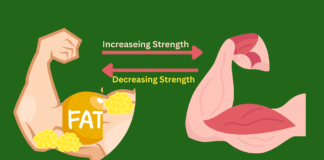People who are concerned about maintaining their body weight often become frustrated when they don’t see any significant change in their body weight, even after opting for daily exercise or a calorie-restricted diet. Why does this happen?
CICO Principle an Oversimplified Version of Energy Balance
Indeed, the CICO “calories in, calories out” principle is a fundamental idea in weight management or energy balance, which states that change in body weight is a result of the difference between the calories consumed and the calories expended. Thus, consuming fewer calories than burning (calorie deficit) leads to weight loss, while consuming more calories than burning (calorie surplus) leads to weight gain. But this principle is an oversimplified version of the complexity involved in weight maintenance. This is why most people who don’t understand the complex nature of weight loss fail to achieve their set target.
Total Calories Intake and Energy Expenditure
Total calorie expenditure is the sum of calories that an individual burns per day and is composed of three major components:
1) Resting metabolic rate (RMR)
2) Thermic effect of food (TEF) and
3) Physical activity.
Resting Metabolic Rate (RMR)
RMR refers to the amount of calories our body needs at rest (60-70% of daily expenditure), which means calories required by the body when we are not actively exercising or moving and the expenditure is mainly associated with maintenance of basic body functions such as breathing, circulation and cell production.
Thermic Effect of Food (TEF)
A portion of the calories that we extract from food is also used to digest food and to absorb, metabolize, and store the nutrients in food. This portion of energy, which is estimated to be about 10% of total calorie intake, is called the thermic effect of food (TEF). The amount of TEF depends on the type of food consumed and other factors such as age and body composition. Proteins require the most energy to digest and process (15-30%) and therefore have the highest thermic effect. Carbohydrates have a moderate thermic effect (6-8%), while fats have the lowest (2-3%). Though TEF alone is not a significant factor in weight management, however selection of food with higher TEF can assist in weight control in combination with a balanced diet and regular exercise.
Physical Activity
Physical activity (accounts for 15-30% of energy use) corresponds to the energy consumed for daily life activities such as cooking and house cleaning, plus the energy needed for planned exercise.
Why Simple CICO Concept does not Work Well for Weight Loss?
Metabolic Adaptation in Response to Calories Restriction
Metabolic adaptation, which is also known as adaptive thermogenesis, is the body’s physiological adjustments in response to calorie restriction that results in reduced energy expenditure and slowing down the rate of weight loss. Ultimately, it becomes difficult to maintain weight loss. Body adjusts the calorie deficit in multiple ways. A decrease in resting metabolic rate and overall energy expenditure is the key aspect of the body’s compensatory mechanisms. Calorie deficit can also trigger hormonal changes such as an increase in ghrelin (hunger hormone) and a decrease in leptin (satiety hormone), leading to amplified appetite and food cravings. Mitochondria’s efficacy to conserve energy is also increased. Thus, metabolic adaptation can reduce the rate of weight loss and may contribute to weight regain.
Different experiments that were conducted on humans proved the effect of metabolic adaptations. In one experiment, the metabolic adaptation was estimated in young, healthy, normal men after 24 weeks of semi-starvation. In another study involving controlled overfeeding, caloric restriction, and subsequent refeeding of 32 non-obese men, a 33% reduction in RMR was quantified after three weeks of 50% caloric restriction. In a long-term study of 2 years, metabolic adaptations resulted in a 40% reduction in RMR after one year in adults who undertook 12% calorie restriction, which suggested that adaptations are not only elicited in short-term interventions but also in prolonged ones.
Metabolic Adaptation in Response to Exercise
The body’s adaptive mechanism not only responds to the calorie restriction but also to exercise interventions. Weight loss achieved through exercise alone also slows down over time and also compared to calorie deficits, weight loss achieved through exercise is less significant. The body’s compensatory behaviours to weight loss by exercise include increased appetite/hunger, reduced non-exercise activity and overestimation of calorie burn. Exercise excites appetite in individuals to consume more calories than they burn, which adversely effect calorie deficit produced by exercise. People who exercise regularly may become less active in other activities and prioritize easy options such as elevators over stairs.
What could be the best strategies to control weight?
Based on the above facts, certain strategies could help achieve weight control without compromising health.
- Due to the higher thermic effect of proteins, an increase in protein intake could contribute to weight control as our body burns more calories digesting protein than digesting carbohydrates or fats. Proteins also help preserve lean muscle mass, which is vital for keeping a healthy metabolism and burning calories even at rest.
- Eating high-fibre foods favours satiety and regulates appetite.
- Diet breaks can alleviate metabolic adaptation during prolonged calorie restriction.
- Regular physical activity can help preserve muscle mass and counter metabolic slowdown.
- Gradual weight loss is less likely to activate substantial metabolic adaptation.
- Since the extent of metabolic adaptation differs between individuals, so it is suggested to consult a registered dietitian for a personalized plan.
For Further Reading
- Does eating less or exercising more to reduce energy availability produce distinct metabolic responses?
- Challenges in tackling energy expenditure as obesity therapy: From preclinical models to clinical application
- Effects of Varying Protein Amounts and Types on Diet-Induced Thermogenesis: A Systematic Review and Meta-Analysis




